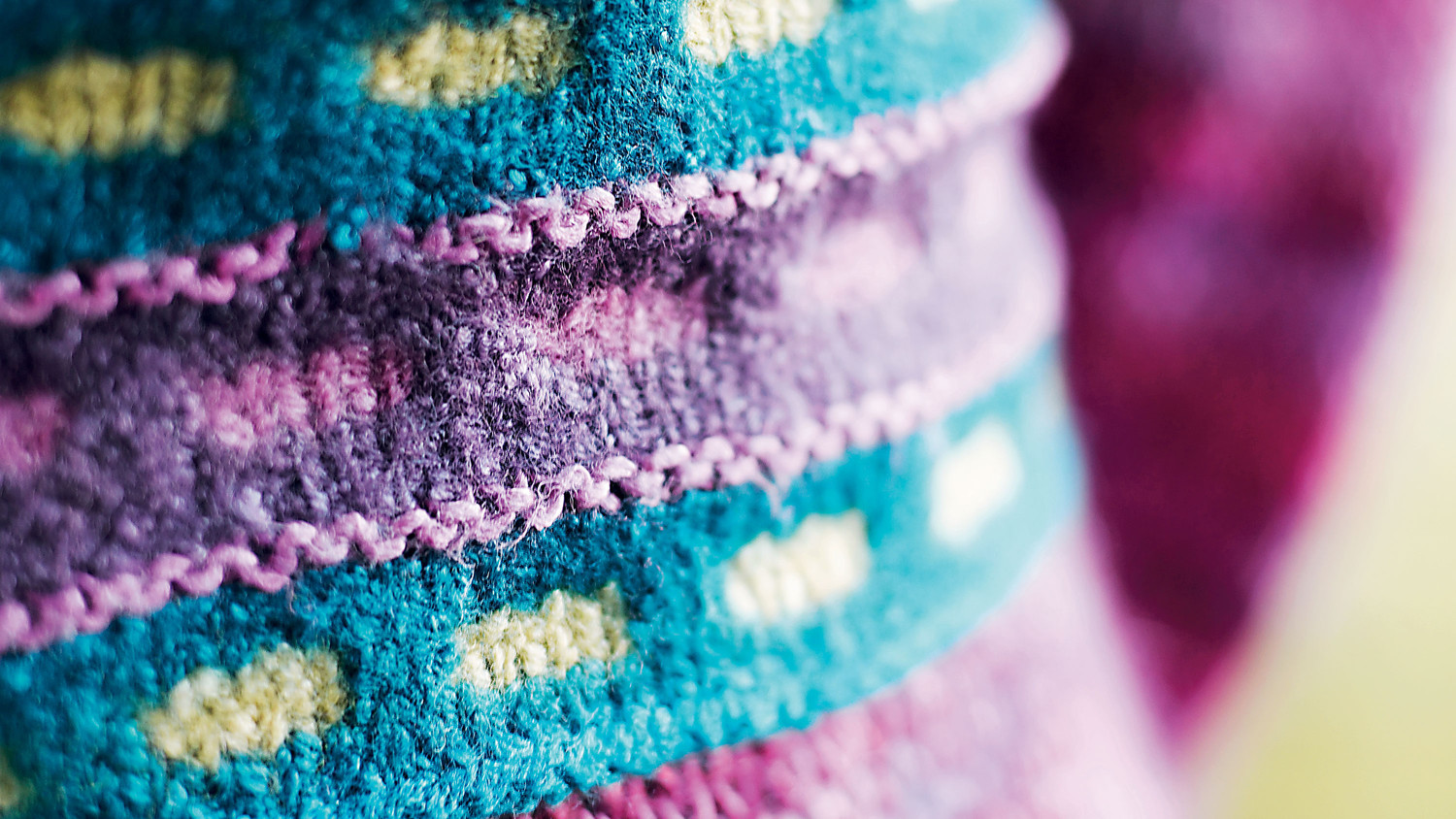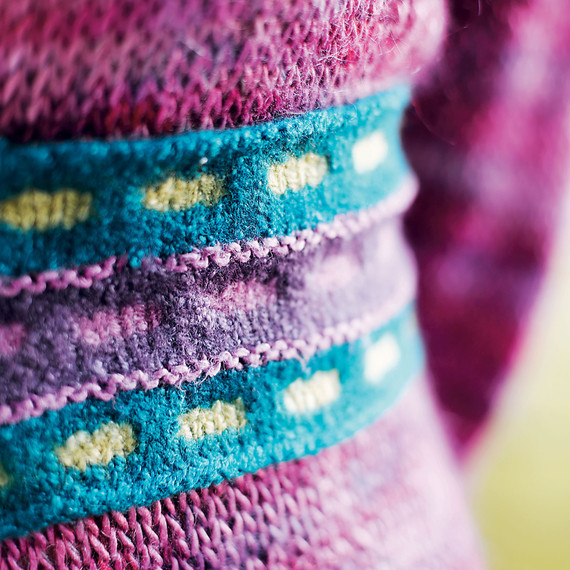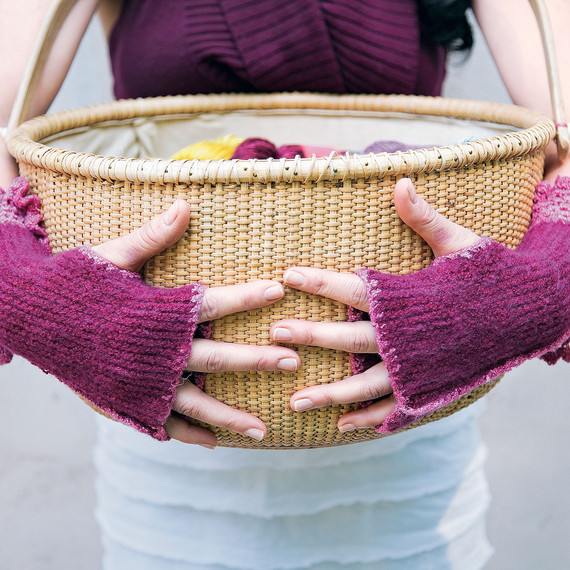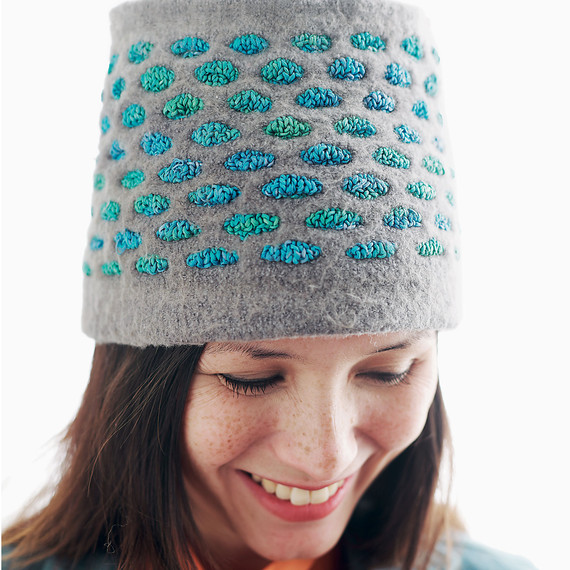

Photography by: Photography by Lise Metzger
Gina Wilde never thought to combine her love of knitting with shibori -– it happened by accident. “My daughter put a pair of hand warmers I’d knit her in the laundry basket. I washed her clothes without knowing the hand-knit item was in the machine, which I never would have done intentionally,” she says. “When I pulled the hand warmers out of the washer, I was blown away by the transformation of the little gloves, which were knit of two different yarns –- the wool/silk blend yarn had felted beautifully, while the silk cuff ruffled dramatically.” That happy accident led her to discover an innovative –- and easy-to-replicate at home — way to apply traditional shibori techniques to knitwear.

Photography by: Photography by Lise Metzger
Shibori, a technique dating back to 8th century Japan, has many interpretations. (We most commonly recognize it for the shaped-resist dyeing patterns of deep indigo onto plain fabric.) But more broadly, shibori is the art of reshaping fabric to add texture and depth –- think: ruffles, bobbles, and spirals. Wilde’s shibori-shaped creations — all projects you will in her book — rely on intensely saturated colors and sensual textures.
3 Techniques to Know
In her book, Wilde demonstrates three dynamic ways to add shibori techniques to knitwear.
The first method, called “shape-resist felting,” uses hard objects (referred to as “resists”) like marbles or rocks bound in the fabric with rubber bands to prevent areas of the knitwear from felting, yielding dimensional pockets of felted fabric.
The second method uses non-felting fibers as resists. Just like choosing different types of knitting yarn will yield different results in texture, different fibers will respond to shibori in different ways. Fibers that yield to felting include wool or mohair. Fibers that do not yield to felting include silk, cotton, and bamboo. When two different types of yarn are woven together and felted, the end result is a pretty alternating “windowpane” effect.
The third method requires knitting felting fiber with nonfelting fiber in alternating directions, yielding beautiful bohemian ruffles.

Photography by: Photography by Lise Metzger
Felting Tips
All of the above shibori techniques involve felting through the washing machine, which is something you can easily do at home. Wilde recommends a top-loading machine set at the lowest water setting, hottest temperature, and gentlest cycle. A small quantity of liquid detergent helps smooth out the process –- helping your knits come out smelling fresh and feeling soft. Place your item in a lingerie bag or similar, and felt for intervals of five minutes, checking between cycles. When you are satisfied with the felting result, rinse in cool water, and let it air dry. Of course, different fibers will yield different results and the key is to experiment with different combinations. This is why Wilde calls her technique “knitting for risk-takers.”
“It’s a brave thing to invest all of that time and energy into your knitting, just to throw it into the washing machine and see what comes out,” she says. “But that’s the fun in it, I think.”
All images reprinted with permission from “Shibori Knits.” Copyright ©2008 by Gina Wilde. Published by Potter Craft, an imprint of Penguin Random House, LLC.
SOURCE:http://www.marthastewart.com/1146281/shibori-and-knitting-new-felting-technique-you-must-try